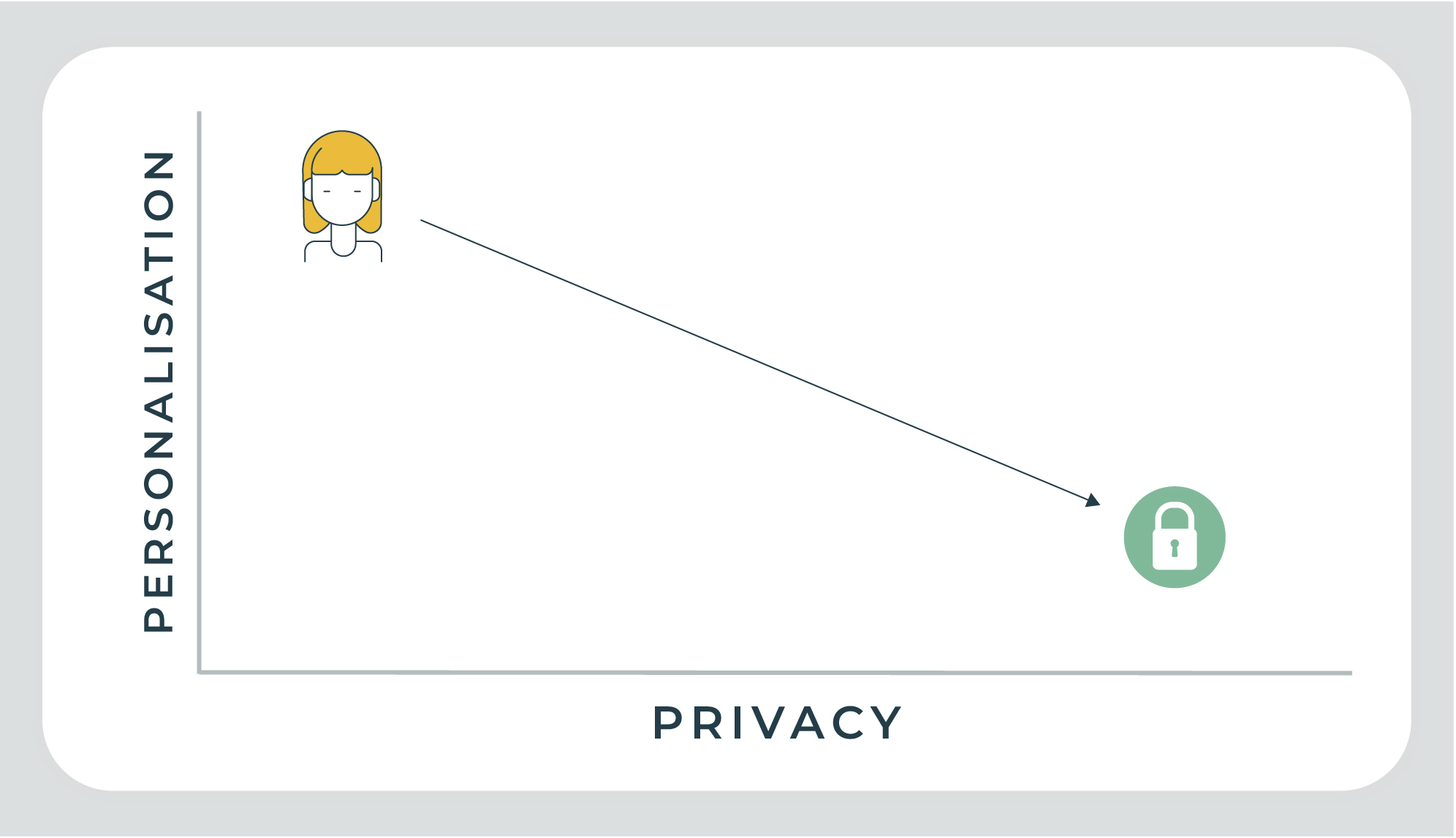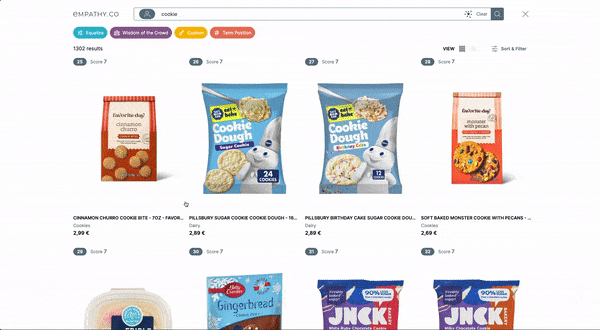Exposing the Privacy Myth: Part 2
Exposing the Privacy Myth: Part 2
It’s time to design our way to better privacy online
Why does today’s conversation about privacy limit the possibilities of creating new experiences online? If you haven’t yet, read part 1 exploring this fundamental question. Then come back here as our story continues…
Rewriting a different privacy story
My last article explained that our level of personalisation essentially decreases as our privacy increases for experiences online, like shopping.

Luckily, the tradeoffs between a personalised experience and safeguarding privacy are not laws of nature; they are tradeoffs by design. This means the design can be changed: the negative correlation here can be converted to a (strong!) positive one.
For this to happen, we need to understand the underlying system that leads to these privacy undermining practices: what made us go in this direction?
First of all, personalisation has proven to be very successful. With recommendations done right, your customers, on average, will spend more. And in a competitive environment where supply is nearly infinite, it’s crucial that you serve your customers in the best and fastest way possible.
When looking at ecommerce, all online shops are basically the same. There’s a grid of items with a picture, a price and a description. Whether you are the world’s most famous sporting brand or sell handcrafted napkins from home, the fundamentals of your ecommerce experience come from common building blocks. When ecommerce took off, the possibilities to convert a shopping experience to a screen were limited. Human aspects of in-person shopping — the senses of touch, smell and taste, plus social feedback from friends shopping with you — got lost in translation online.
Therefore, instead of looking for ways to implement these human aspects, brands needed other ways to make online shopping more attractive. Aligning with the web’s promise, this was found in the wide availability of information and reach of a big market. Customers could quickly see what anyone had to offer, and shops were able to reach a worldwide audience. But these benefits applied to all brands and couldn’t be used to create a competitive advantage. So quickly, the goal became to stand apart with a frictionless and personalised experience.
The path to personalisation
Consider what ‘frictionless’ means for shopping: ensuring the flow runs smoothly from the moment a customer enters a shop (either in person or online) to their final purchase. And an essential element of this flow is a personalised experience. In a physical store, that can be a shop attendant greeting customers and asking what they’re looking for. Online, frictionless can be showing people suggestions of what they are (probably) looking for when they start typing in the search box.
But to achieve online personalisation, brands require information. They need to understand people’s interests to personalise shopping suggestions. This information was (and still is) widely available, as any online interaction leads to new data, and with no rules in place, this data could easily be collected and reused.
This strategy proved widely successful, at least for companies and their booming online sales. But today, we as consumers are waking up to what we lost in this data-driven model — our privacy. And because this model was successful and widely accepted, we forgot this path was chosen based on the possibilities and knowledge we had back then: a more human solution simply wasn’t an option.
Now that these practices have come under scrutiny by authorities worldwide, companies have taken steps to ensure data can still be collected, albeit in a more privacy-friendly way. Recently, both Google and Apple announced they will ban third-party cookies altogether. For individuals, this is a positive development as a reaction to the increasing concern about trackers and the use of advertising cookies.
While this can be considered a win for privacy, we cannot start celebrating yet.
While third-party cookies are being banned, at the same time Google is leveraging their Chrome browser to track our online behaviour. Apple, known for its publicised privacy efforts, is growing its own advertising services. And because these tech giants are so successful (Chrome is the #1 browser; iPhone is the #1 phone worldwide), they already have access to vast amounts of data and don’t need to rely on third-party solutions. In fact, they could become even stronger with these developments.
As a result, despite the changes that promise higher protection of each individual’s privacy, the underlying system of gathering people’s information stays intact and with that, the myth of a privacy trade-off stays alive.
As long as businesses make liberal use of privacy-exploiting analytics tools that collect and store personal data without people’s consent, those big platforms will continue to find ways around current regulations.
That’s why now it’s crucial not only to look at the harm of the current system but also to consider the limitations of this system that prevent us from creating better experiences. The type of experience that benefits both the individual and companies.
Because not only are we in a situation that puts a handful of companies in control, where our society is under pressure by polarisation, but we also miss out on genuinely engaging and personal experiences if we remain such a narrowed view of our privacy. With the knowledge and technology we have today, we can create experiences in which privacy and personalisation empower each other.
So now is the time to reshape ecommerce into the human experience we all long for. A privacy story that looks like this:

Let’s recap:
- The privacy tradeoff is one by design, not by default.
- Improvements have been made, but the underlying system remains untouched.
- With today’s knowledge and technology, we have the power to undo the limitations of the current system.
In my next article, I’ll explore how privacy can become a fundamental building block for better experiences that drives profitability and benefits people. Stay tuned!










